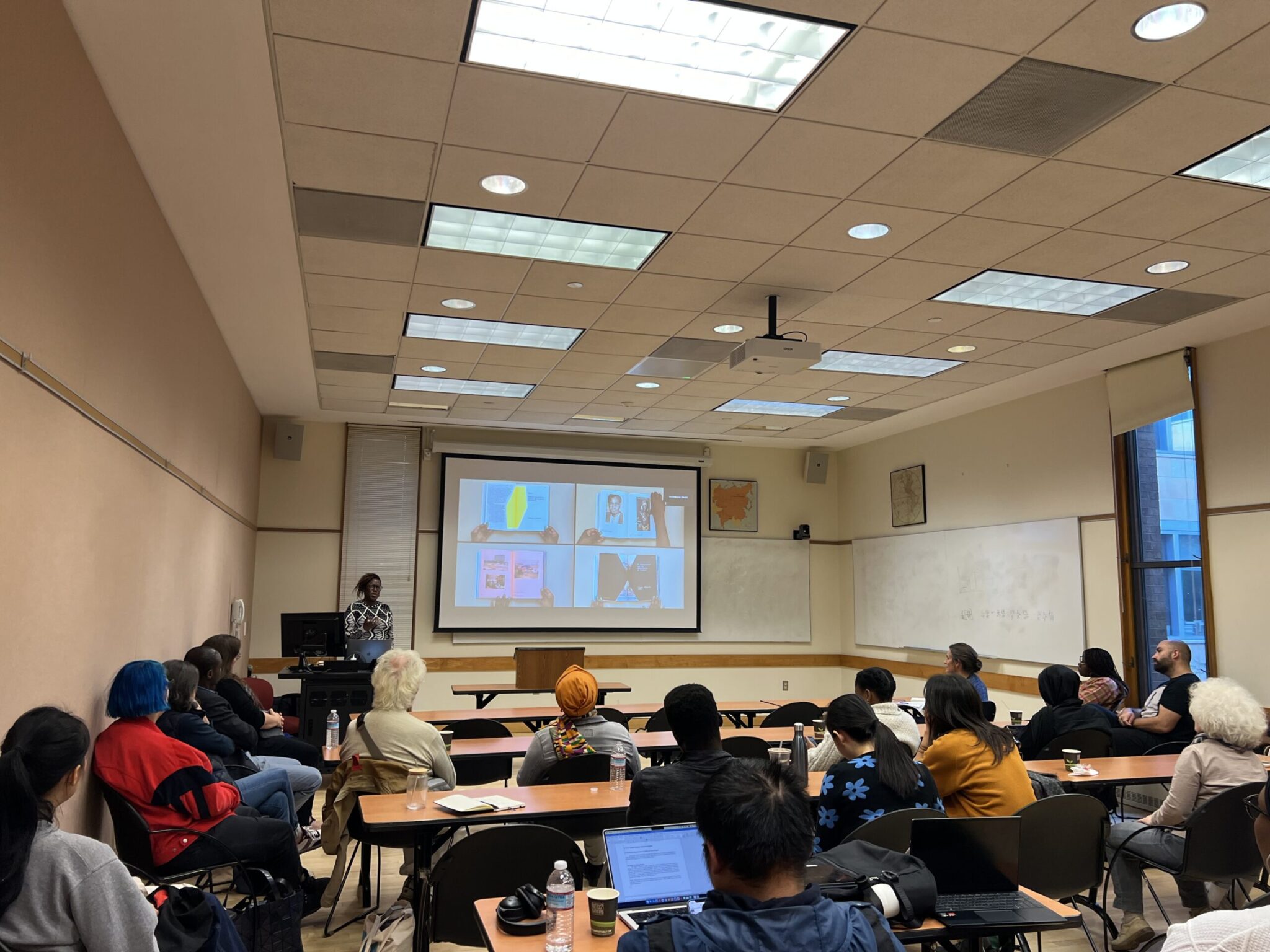Professor Nontsikelelo Mutiti ART ’12 headlines African Studies lecture series
The Council of African Studies started the season with an enlightening lecture from a Zimbabwe-born Yale artist and professor.

Luciana Varkevisser, Contributing Photographer
Professor Nonstikelelo Mutiti ART ’12 gave personal insight on her multimedia art pieces in her lecture on Wednesday as the headlining speaker for Yale’s Council of African Studies.
Mutiti was born in Zimbabwe, where she attended the Zimbabwe Institute of Digital Arts. She then went on to receive her master’s degree from the School of Art, with a concentration in graphic design. Currently, she is the director of graduate studies for graphic design at the School of Art.
Mutiti’s lecture on Wednesday was the first of many in a new lecture series put on by the Council of African Studies.
“Homesickness strengthens that affinity and also motivates you to claim the identity [of your culture] in a way that you might not have, or interrogate the identity in a way that you can’t back home,” said Mutiti while reflecting on her journey to the United States from Zimbabwe.
The ideas of home and community featured prominently in her lecture. As an immigrant to the United States, Mutiti searched for places that reminded her of her community back home in Zimbabwe. She found such togetherness in the hair salons of Harlem.
Mutiti sees similarities in creating art and braiding hair. She views the hair salon as a place where women gather to create something beautiful, and she wants to bring this aspect of community into her art, she said.
“I was really interested in how … she is basing her art on these spaces where community is most prevalent and community is built and community is felt,” said African Studies graduate student Abbey Reynolds GRD ’24. “I love thinking about community and art … they go hand in hand.”
Mutiti’s plethora of projects did just that. As the art director of the Sojourner Project, Mutiti brought together people from all over the world to create a digital Black Studies academy — an international forum for Black feminist artists and scholars. The website partners with several universities, including Yale.
In her multimedia publications, Mutiti deliberately designs the sequence and look of the book to make the reader think and ask questions. There is intention behind the order of photographs and the art where pages merge.
To Mutiti, her publications are reminiscent of a “relationship of the braider and the client,” as she described a similar relation between the creator and the audience.
“You have to hold [a publication], [and] you also have to elect to pick it up,” Mutiti said. “Something has to speak to you about that publication for you to pick it up, and then you have to live through it.”
This unique perspective of the audience as an active participant in a piece of work can be seen throughout Mutiti’s pieces. Her murals, notably “Black Thang” in Washington, D.C., were painted with both glossy and matte black paints. This creates a shimmer effect for the viewer, which changes depending on the time of day and how the viewer is moving.
Mutiti’s works are full of layered meaning. Her works, such as “Hakuendwi,” are not only beautiful to look at, but also ask the viewer a question.
“I was particularly interested in the titles of the projects,” said Ivana Uzoh GRD ’25. “I felt like there was a story being told in that itself.”
Meaningful titles are a key aspect of Mutiti’s work. The word “Hakuendwi” itself is a warning to not leave home. The title encourages the viewer to think about where they are going, the community they hope to create, and the people they are leaving behind, Mutiti said.
“Hakuendwi” is one of the only murals Mutiti painted in Zimbabwe, adding even more significance to the title.
As an artist and an educator, Mutiti brings a sense of questioning to all her pieces. Her process of creating art is based not so much on what she wants to tell the viewer, but on what she “wants to learn for [herself],” she said. Her pieces build off of one another, braiding together.
The next Council of African Studies lecture will take place Oct. 4 in Luce Hall.







